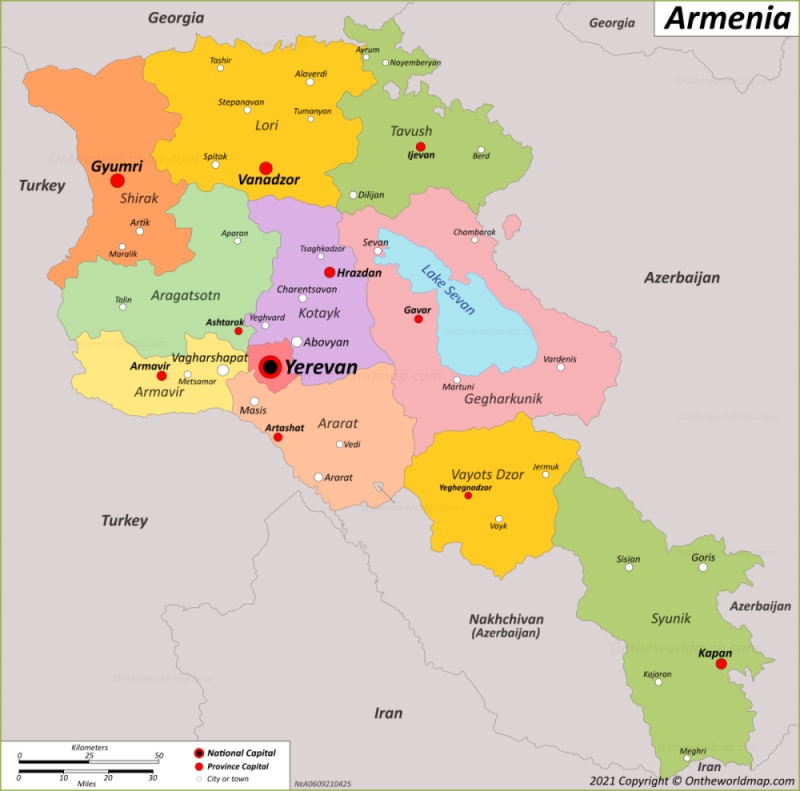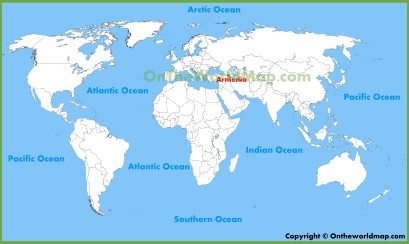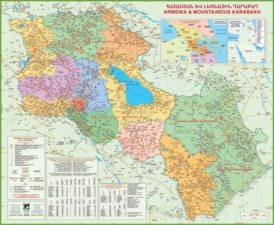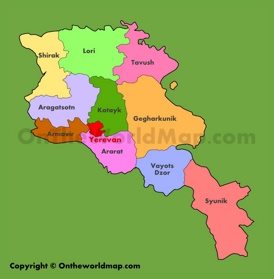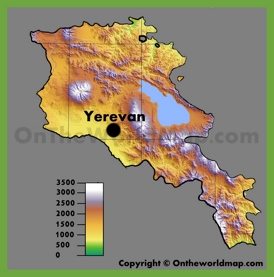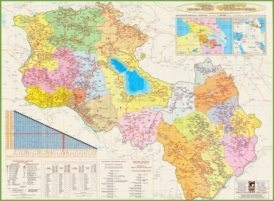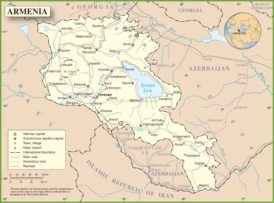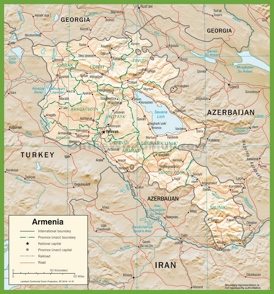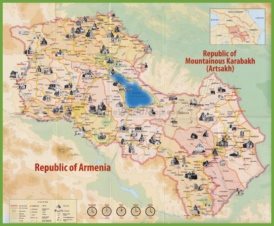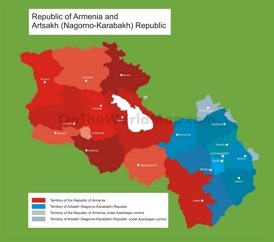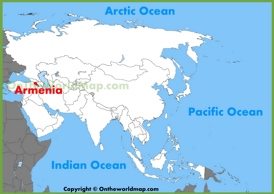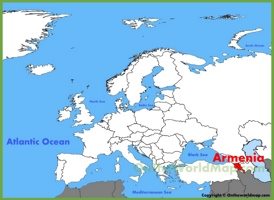Armenia Map
Description:
This map shows governmental boundaries of countries; lake Sevan, provinces, province capitals, major cities and towns in Armenia.
Size: 1450x1434px / 478 Kb
Author: Ontheworldmap.com
You may download, print or use the above map for educational, personal and non-commercial purposes. Attribution is required. For any website, blog, scientific research or e-book, you must place a hyperlink (to this page) with an attribution next to the image used.
Online Map of Armenia
Detailed Maps of Armenia
About Armenia
Armenia is a landlocked country located in the South Caucasus region of Eurasia, bordered by Turkey to the west, Georgia to the north, Azerbaijan to the east, and Iran to the south.
Yerevan, the capital and largest city, serves as the political, cultural, and economic center of the country. Other major cities include Gyumri, known for its cultural heritage, and Vanadzor, which is an important industrial center.
Tourism plays a crucial role in Armenia's economy, attracting visitors with its rich cultural heritage and picturesque scenery. The country boasts numerous attractions, including ancient monasteries such as Geghard and Haghpat, both listed as UNESCO World Heritage Sites. The capital, Yerevan, offers a combination of modern amenities and historical attractions such as Matenadaran, a repository of ancient manuscripts, and Cascade, a massive staircase decorated with modern artwork.
Armenia's cuisine, characterized by the use of fresh ingredients and traditional recipes, also attracts tourists. Dishes such as khorovats (kebab) and dolma (stuffed grape leaves) highlight the country's culinary offerings. In addition, various cultural festivals and events are held in Armenia throughout the year, increasing its appeal as a tourist destination
Armenia's economy relies on several key sectors, including mining, agriculture, and information technology. Mining produces copper, molybdenum, and other metals, contributing significantly to exports. Agriculture, although smaller than in the past, remains a vital sector of the economy, producing fruits, vegetables, and livestock. The IT sector is booming, making Armenia a regional technology center.
Thus, Armenia is a unique combination of economic sectors, cultural richness and tourist attractions, making it a noteworthy country in the South Caucasus region.
The Facts:
Capital: Yerevan.
Area: 11,484 sq mi (29,743 sq km).
Population: ~ 3,000,000.
Largest cities: Yerevan, Gyumri, Vanadzor, Vagharshapat, Abovyan, Kapan, Hrazdan, Armavir, Artashat, Ijevan, Gavar, Goris, Charentsavan, Ararat, Masis, Artik, Sevan, Ashtarak, Dilijan, Sisian, Alaverdi, Stepanavan, Martuni, Spitak, Vardenis, Yeghvard, Vedi, Byureghavan, Nor Hachn, Metsamor, Berd, Yeghegnadzor, Tashir, Kajaran, Aparan, Vayk, Chambarak, Maralik, Noyemberyan, Talin, Jermuk, Meghri, Ayrum, Akhtala, Tumanyan, Tsaghkadzor.
Official language: Armenian.
Currency: Dram (֏) (AMD).
Provinces of Armenia: Aragatsotn, Ararat, Armavir, Gegharkunik, Kotayk, Lori, Shirak, Syunik, Tavush, Vayots Dzor, Yerevan.
Driving side: right.
Calling code: +374.
Internet TLD: .am.
Time zone: UTC+4 (AMT).
Website: www.gov.am.
Google Map of Armenia
Geography of Armenia
Armenia's geography is characterized by a predominantly mountainous terrain, with an average altitude of 1,800 meters above sea level. The Lesser Caucasus Range runs through the country, which gives it a rugged landscape. Armenia is divided into several regions, including the Ararat Plain, the Lori Plateau and the volcanic ranges of Gegham and Vardenis.
The country's climate varies by region and has a continental influence. Summers in the Ararat plain are characterized by high temperatures, while the mountainous areas are cooler. Winters are cold, especially in the highland areas, with significant snowfall. Precipitation varies, with more rainfall in the north than in the arid southern regions.
Lake Sevan, one of the largest high-altitude lakes in the world, serves as a notable geographical feature affecting the local climate and biodiversity.
Brief History of Armenia
Armenia's history spans several millennia, marked by the rise and fall of various states and empires. The kingdom of Urartu, founded around the 9th century BC, is one of the earliest organized states in the region. By the 6th century B.C., the Armenian dynasty of Orontides had arisen, which in the 2nd century B.C. gave way to the dynasty of Artaxiades, which greatly expanded the territory of Armenia.
In 301 BC, Armenia adopted Christianity as the state religion, becoming the first nation to do so. This pivotal event shaped its cultural and religious identity. In the following centuries, Armenia was subjected to invasions and domination by various empires, including the Byzantine, Persian, Arab and Ottoman empires.
In the early 20th century, the Armenian Genocide (1915-1917) took place under the Ottoman Empire, resulting in the mass extermination of Armenians. Armenia briefly gained independence in 1918, and in 1922 became part of the Soviet Union. After the collapse of the Soviet Union, Armenia declared independence in 1991, becoming a sovereign state.

